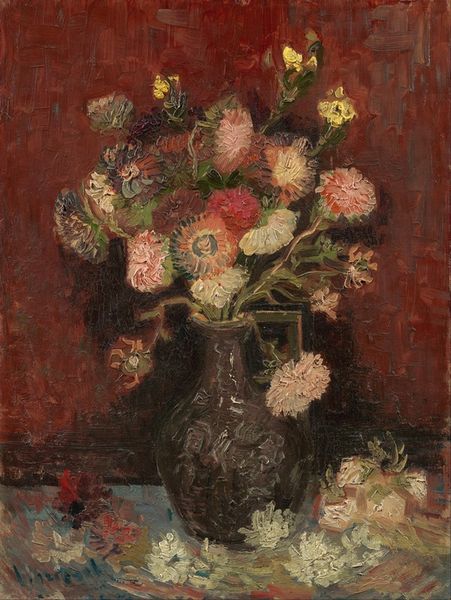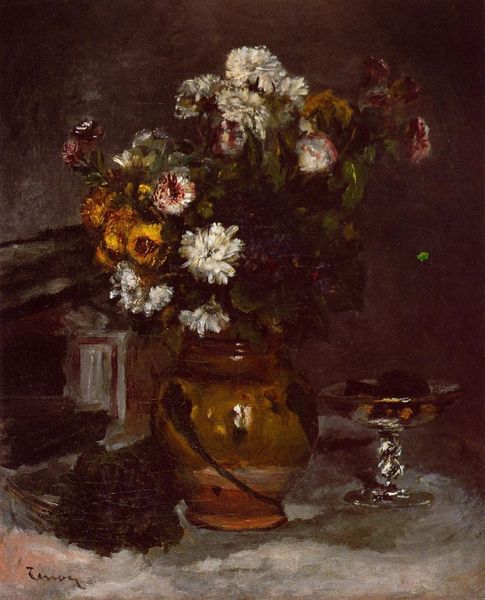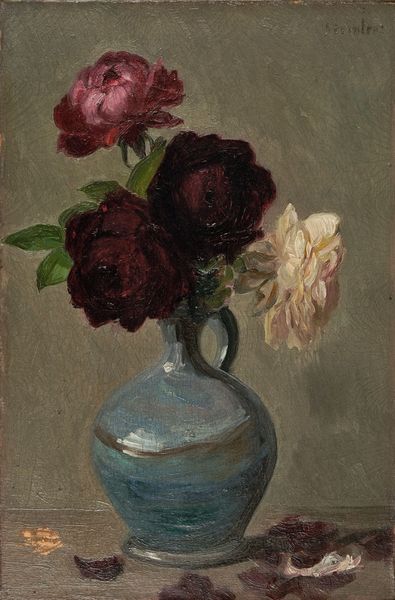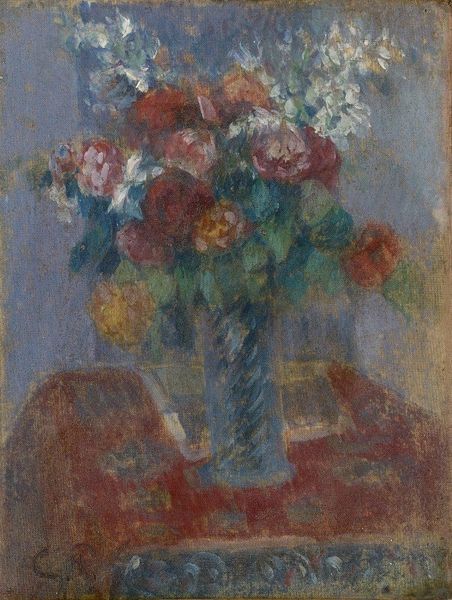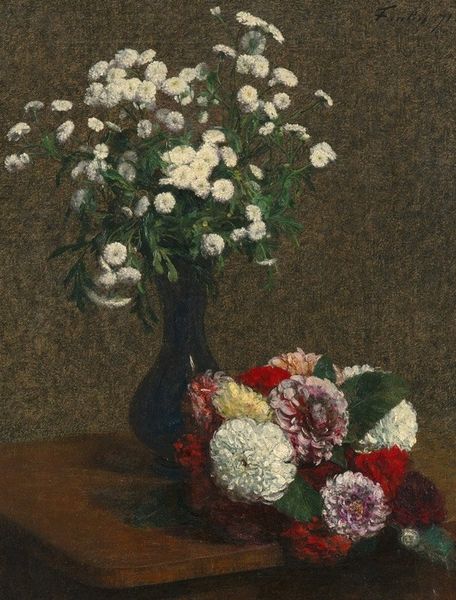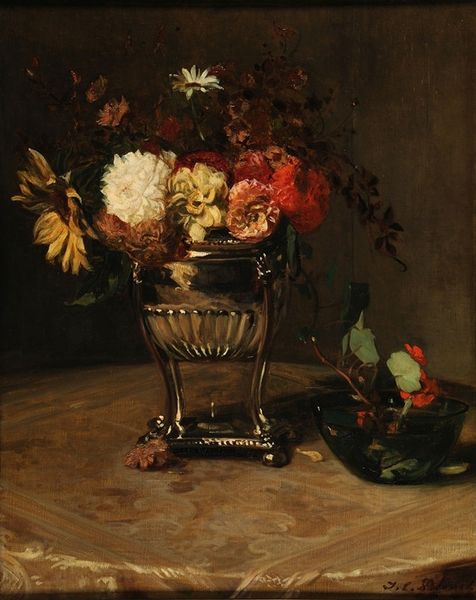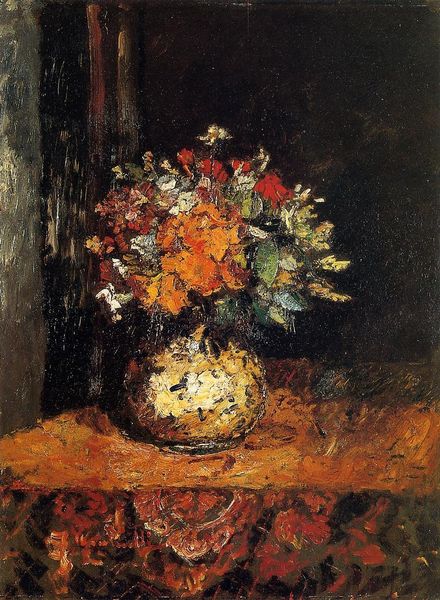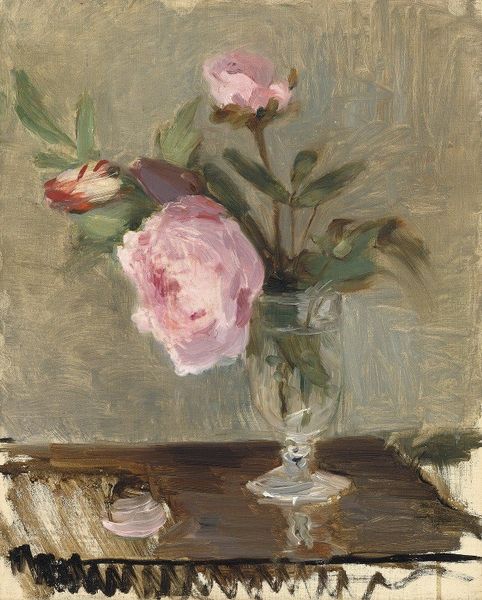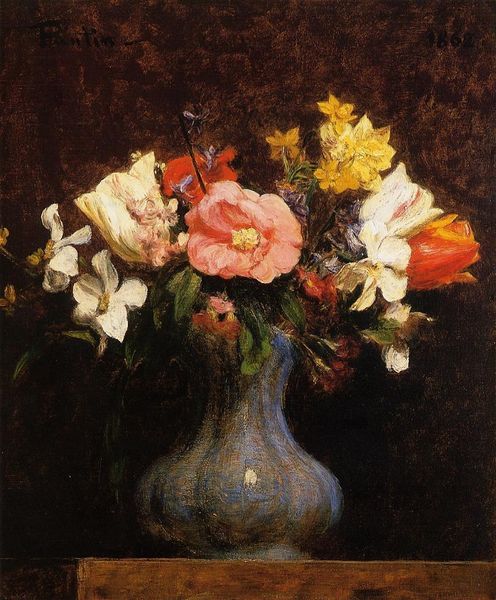
painting, oil-paint, impasto
#
still-life
#
still-life-photography
#
painting
#
oil-paint
#
oil painting
#
impasto
#
realism
Copyright: Public domain
Curator: So, here we have Ipolit Strâmbu’s "Vase with Roses and Chrysanthemums" from 1911. It’s a still life rendered in oil paint, rather traditional in its subject matter, but there’s something captivating about it, isn’t there? Editor: It's interesting. Immediately, I am struck by the weight of it, the materiality. It looks heavy, dark… almost funereal, but that’s just my first reaction. I notice the thick application of paint; you can almost feel the artist building up those petals. Curator: Funereal… I see that. Perhaps it’s the sombre palette contrasting with the inherent beauty of the flowers. But I'm drawn to the light, how it catches certain blossoms and the ceramic vase. Strâmbu uses impasto, thick layers of paint, which creates texture and a kind of vibrancy against that darkness. Editor: Yes, that texture is important. I mean, consider the vase itself – a mass-produced object, perhaps, certainly made through skilled labor in ceramics, brought into the realm of "high art." There's a fascinating collision there, a suggestion that beauty resides even in everyday, manufactured things. Curator: Precisely! And the flowers, also "manufactured," in a sense. Cultivated, arranged… beauty orchestrated through human intervention. There’s something about this orchestrated still-life that also feels chaotic – like a celebration on the verge of collapse, echoing the cycle of growth, decay, life, and death… Editor: You've hit on something there. Flowers, a vase—these are commodities; things bought and sold. They represent the cycles of production and consumption. How fleeting beauty becomes a symbol of bourgeois leisure. It brings attention to the social forces and class structures subtly revealed through something as apparently simple as a vase of flowers. Curator: Right. I think this piece pulls us in multiple directions. There's beauty and darkness, abundance and fragility, simplicity and… if you zoom in on any single square inch, there's furious complexity. And perhaps, that very contradiction mirrors something about life itself. Editor: Absolutely, it holds both the hand-crafted and commodified—forcing us to reflect on labor and value itself, which elevates this beyond a mere visual exercise into an interrogation of cultural construction. An intimate view with such far reaching questions, who would expect it in such an everyday scene?
Comments
No comments
Be the first to comment and join the conversation on the ultimate creative platform.
